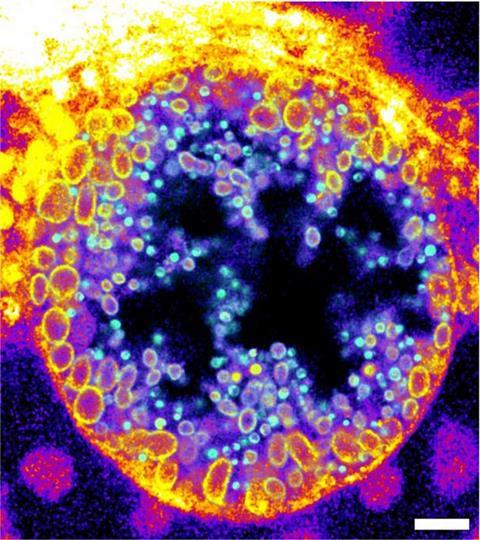At the end of the 19th century, the German pathologist Ludwig Thudichum isolated previously unknown fatty substances (lipids) from the brain. He named the new class of molecules sphingolipids – after the Greek mythical creature Sphinx, out of respect for “the many riddles it posed to the researcher”.

Since then, many diseases have been discovered that are caused by a faulty sphingolipid metabolism in the brain, including Fabry’s disease and Gaucher’s disease. Sphingolipids also have been connected to infectious diseases, for instance viral infections with Ebola, measles or Covid-19 as well as bacterial infections with Pseudomonas aeruginosa or Staphylococcus aureus, which can cause middle ear infection, skin and lung infections and many other diseases.
READ MORE: Scientists map role of Porphyromonas gingivalis in chemotherapy resistance
READ MORE: Active substance identified for the prevention of chlamydial infections
In these infections the degradation of the molecule sphingomyelin by the enzyme sphingomyelinase is often a crucial step. However, visualizing the enzyme’s activity was previously impossible.
Chemical probe needed
Researchers from Würzburg and Berlin have now succeeded in developing a sphingomyelin derivative that can be used to visualise the distribution of sphingomyelin and the activity of sphingomyelinase in infection processes. The study appears in Nature Communications.
The scientists are part of the Research Training Group 2581 “Metabolism, topology and compartmentalisation of membrane proximal lipid and signalling components in infection” funded by the German Research Foundation (DFG). Therein chemists, physicists and biologists collaborated to synthesize novel chemical compounds and test their applicability in infection research.
“The new molecules are trifunctional sphingomyelins based on the natural product sphingomyelin and equipped with three additional functions. It was difficult to design such molecules, that are accepted by the metabolism like its natural origin” says Professor Jürgen Seibel from the Institute of Organic Chemistry at Julius-Maximilians-Universität (JMU) Würzburg in Bavaria, Germany.
Sphingomyelin degradation
The scientists demonstrated the function of their newly developed molecules not only by determining the activity of a bacterial sphingomyelinase on the surface of human cells. They also visualised sphingomyelin degradation within human cells during the course of an infection with intracellular Chlamydia bacteria, which are known to infect the human genital tract and are suspected to contribute to the development of cancer in infected tissues.
Within their host cells Chlamydia form a replicative organelle called an inclusion. The researchers showed that chlamydial inclusions mainly contain the cleaved forms of the trifunctional sphingomyelins. Using so-called expansion microscopy and click-chemistry, they observed that the proportion of metabolised sphingomyelin molecules increased during the maturation of non-infectious to infectious Chlamydia particles. By being able to visualise this infection process new targeted strategies against these infections can now be developed.
“The new chemical tool will certainly serve us well and readily can be used in many laboratories,” Professor Seibel states. “Our aim is to use it to identify novel anti-infectious or immunotherapeutic strategies for drug development that can be used to combat infectious diseases by modulating sphingolipid metabolism.”







No comments yet